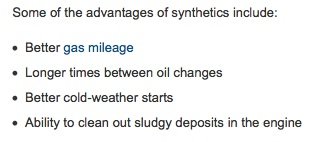If I'm not mistaken, Prolong is an oil additive that is positive charged oil and it sticks to the block (negative charged) like a magnet and can stay there for an estimated 2000 miles. I have never tried it, but for people who only use dino oil, that is an option for reduced wear on cold starts.
That sounds very like the product Bi-Tron, which was sold 15 odd hers ago as an additive via network marketing. I got involved for a while, and although I just proved, once again, I'm a hopeless salesman, the product certainly lived up to its claims. We were told the technology was actually developed by the Russians, who got sick of their tanks being wrecked, or rather their gear boxes and/or engines of their tanks being wrecked by land mines laid by the Afghan resistance when they were silly enough to try to conquer that country, so they developed this oil with positively charged molecules that were attracted to the negatively charged engine metal. The hotter it gets, the more negatively charged = attracted the oil more strongly. It's allowed a gutted tank to drive home without wrecking the mechanicals. They showed demos of cars with oil drained out being driven without seizing up for long periods. Their spray on penetrating oil was amazing. I still have some I use on stiff joints, sliding doors etc. last for months.
When Castrol started using the same technology in the Magnatec, it sort of killed Bi-Tron off I suspect, as it sort of died away. I use it in my vehicles as well as the boat. I think it performs as well as the full synthetics, but is cheaper.
Coming back tho to the point you made some have trouble accepting...that of the temp dropping from the reduced friction. That was also something noticed when using Bi-Tron. It did drop the av running temp by a small but measurable amount, so I suspect the thermostat, being a fairly crude temp control, does not have the last or total say in engine temp.
That should provoke a bit of discourse. However, I'll get in first with how that can happen. The thermostat opens at a predetermined minimum temp, not a max, so probably most engines have the coolant temp go on to rise a few degrees above that minimum until it reaches an equilibrium with the ability of the cooling system to arrest further rise. We have all noticed I'm sure how the boat (or you car for that matter) runs a bit different on the gauge in cold weather compared to hot. So an oil that actually cuts friction more, could well see it not rise as much, but still not lower it enough to cause the thermostat to close...my case rests...









 again thanks for the info guys it was good reading
again thanks for the info guys it was good reading